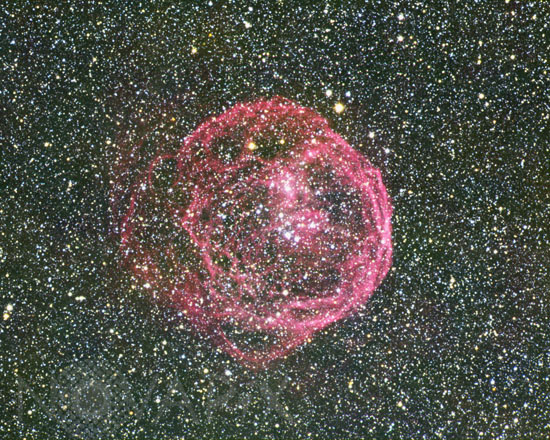Photo Agency - Astronomy - Space - Nature

The N 70 nebula in Large Magellanic Cloud (LMC)
author: Anglo-Australian Observatory/David Malin Images/Novapix
reference: a-neb80-70002
Image Size 300 DPI: 51 * 40 cm
At the centre of this remarkable bubble-like nebula nebula is a small group of extremely hot stars. Some of these stars are rapdly losing mass and have stellar winds blowing from their surfaces with velocities that approach 4000 kilometers per second. Such stars are known as Wolf-Rayet stars and are found in galaxies capable of forming massive stars. There are many such stars in the Large Magellanic Cloud (LMC) but not all of them are associated with distinctive nebulae. The outward flowing streams of energetic particles from Wolf-Rayet (and other energetic stars) eventually interact with the relatively stationary interstellar medium pervading the LMC, releasing much of their energy as a thin spherical shell of luminous material. The hollow structure accounts for the shape we see in the sky. This nebula is almost 400 light years across, about 100 times the distance from the Sun to the nearest star. The LMC is about 160,000 light years away and is the closest galaxy to the Milky Way.
Contact : Stéphane Aubin +33-(0)9-51-26-53-76
© Novapix - All rights reserved


